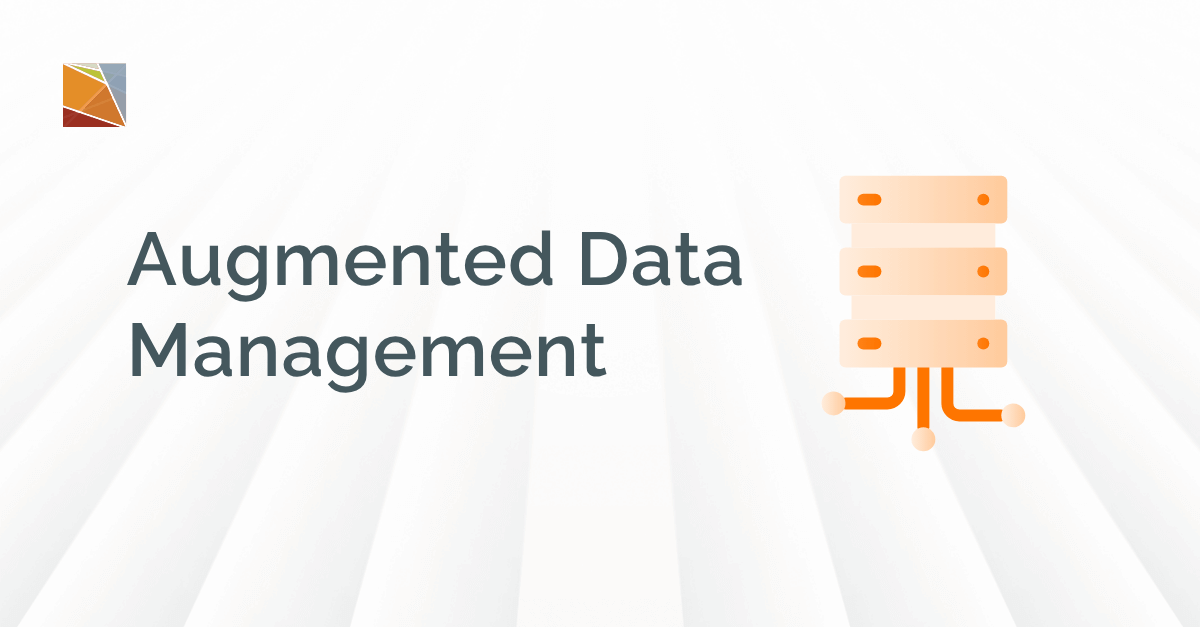Share this on:
Augmented data management is described as the use of artificial intelligence and machine learning to automate and streamline data management tasks such as data quality, data governance, metadata management, master data management, and more.
Please note that augmented data management is the human-focused application of artificial intelligence to enhance data management capabilities. This means that artificial intelligence is used to support human intelligence in decision-making and not replace it entirely.
Manual data management tasks like anomaly detection, data traceability, lineage tracking, etc., is automated with augmented data management. Artificial intelligence models can do all this much faster with almost zero errors.
Informatica is one of the most popular data management platforms that provides users with augmented data management functionalities. In fact, it is known to be the only end-to-end AI-powered data management platform. Informatica has been named a Leader in the Gartner® Magic Quadrant™ for Augmented Data Quality Solutions. LumenData is proud to be a platinum enterprise partner with Informatica. Explore our solutions with Informatica here.
Benefits of Augmented Data Management
Apache Spark follows a hierarchical architecture that’s based on a primary and secondary node setup. At the center you’ll find the Spark Driver which is the primary node. It interacts with the Cluster Manager to handle resource allocation and distributes tasks to the secondary nodes in the cluster.
Once the processing is done, the driver will send the results to the client application. Whenever any Spark application runs, the driver initiates SparkContext. It interacts with the cluster manager to distribute tasks and track their execution across worker nodes.
Greater Team Productivity
There are multiple manual, repetitive tasks that are automated by augmented data management – tasks such as:
Data Integration, Data Quality Checks, Data Cataloging, and more.
By adopting augmented artificial intelligence, enterprises can support their talent to focus on solving high-impact business problems, rather than spending countless hours on manual data management work.
Faster Decision-Making
Augmented data management provides organizations with trusted data at lightning speed, intelligent recommendations, and real-time insights. With built-in intelligence, augmented systems help users to find the right data at the right time. Plus, they also help understand its context and find answers to questions such as where the data came from, how it’s been used, and how trustworthy it is. Business users, especially non-technical users, can self-serve with confidence. All this leads to more informed, quick decision making across the organization.
Better Data Quality
It’s rightly said – Data is the new oil. A good portion of business success is dependent on how organizations put quality data to work.
Augmented data management involves the use of intelligent augmented systems that automatically identify and resolve data quality issues.
For example, they can detect anomalies that humans might overlook, such as inconsistencies across data sources.
Increased Cost Savings
Manual data governance and management is not sustainable.
A Gartner Study suggests that machine learning and automation are capable of reducing manual data management tasks by 45%. Modern augmented data management platforms can scale dynamically learning from new data.
This means that enterprises can handle larger data volumes without having to incur extra expenses on expanding teams to perform manual data management tasks.
How to Get Started with Augmented Data Management: Quick Tips
Start by defining your objectives. Here are some questions you should ask yourself – Do I want to improve data quality for compliance? Do I want to enable self-service analytics? Or do I want to accelerate cloud migration. This way your efforts are focused and measurable.
Perform an audit of your current data ecosystem. We can help you with data maturity assessment & craft the right data roadmap for your business. Be fully aware of how to incorporate augmented data management into your ecosystem & how it will help achieve your business objective.
Choose the right augmented data management tool. We recommend using Informatica – the leader in AI-powered cloud data management.
Involve the right people early in the project such as data engineers, data stewards, analysts, business stakeholders. This helps align expectations, roles, and governance needs.



